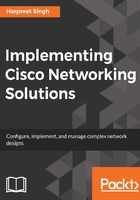
Network enabling new experiences
The primary role of the network is to transport data from the source to the destination securely and intelligently. Intelligently would imply that the network should be able to differentiate between the data that is business critical or latency sensitive, and make all efforts to transfer that data quickly to the destination, without any loss on the network.
Imagine running an IP video call on a network that is congested, and hence has packet loss. The entire experience of having a video call would be degraded, and the purpose of using video over voice for better collaboration and interactivity will be defeated. But that is the primary job of the network.
Let's look at how the network is enabling new experiences for the end users. The first changed is using wireless instead of a wired connection. Even though we might have an Ethernet port at our desk, and we are sitting close to the port, we will connect to the network over Wi-Fi network if one is available. The idea of having to manage cables and connect to the network on a wired connection is passé.
Wi-Fi connectivity has become the expectation from users these days. We even expect it when we visit a coffee shop or a shopping mall. And people are being offered this connectivity at no incremental cost to the user most of the time.
This is because the network is providing a channel to connect to the customer and engage the customer in more meaningful ways, which can help drive better experience enhancing customer loyalty, and bringing in more business options. This is where location based services come into play.
Wi-Fi is provided to the end users using different Wi-Fi Access points that radiate signals, and the users connect to the nearest AP based on the user credentials and the networks being advertised. Organizations these days can use technologies such as Wi-Fi to detect that a new user has come into the network coverage zone and send him information on how to connect to the network. Once the user is connected, the network can be used to send specific messages to the user that could be promotional offers in the store or other information over the same network.
This can go a step further where advanced analytics can be used to find out where exactly the user is, and send them navigation maps to get to the nearest billing desk, kids play zone, or an area where there is a flash sale offer. The same network technology can be used to locate a person in real time, and hence keep track of where a person is at a given point in time. This could be used for security purposes such as: to track kids in an entertainment park, or to track how many times a user visited a particular region, and whether the user is returning customer or is a first-time customer. The list is endless, and constrained only by imagination, relating to how the user experience can be enhanced by using the information provided by the underlying network infrastructure. We will talk about the technologies that enable the location-based services on a Wi-Fi network in Chapter 5, Understanding and Configuring Wireless Access Technologies.